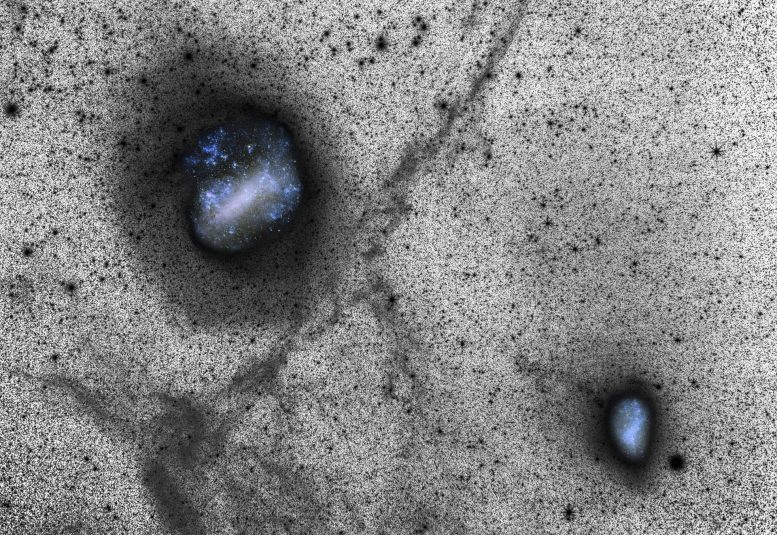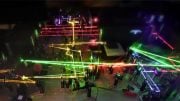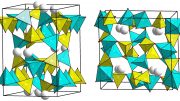
Each of the thousands of spots in this new image represents a distant star, and the glittering blue holes reveal glimpses of our neighboring galaxies, the Large and Small Magellanic Clouds. Credit: Y. Beletsky (LCO), D. Martinez-Delgado/ESO
This newly released ESO image reveals a new view of the Large and Small Magellanic Clouds.
Each of the thousands of spots in this new image represents a distant star, and the glittering blue holes reveal glimpses of our neighboring galaxies, the Large and Small Magellanic Clouds. Although this image looks as if it was made on a large-scale telescope it was in fact captured from ESO’s La Silla Observatory using a portable setup consisting of an SBIG STL-11000M CCD camera and a Canon prime lens. It was presented in a scientific paper alongside state-of-the-art simulations, in an exciting example of how a small camera, a fast lens, a long exposure time, and one of the world’s best astronomical sites can reveal huge faint features better than even a big telescope.
This deep image was captured using the LRGB method and provides an insight into the actual process of creating spectacular astrophotography. Many challenges face those attempting to photograph the night sky, including interference from light sources other than the object being photographed, and capturing objects in sufficient depth.
Trying to maximize the signal received from the target, whilst minimizing input from other sources — known as noise — is a crucial aspect of astrophotography. The optimization of the signal-to-noise ratio is far more easily achieved in black-and-white than in color. Therefore a clever trick often employed to capture a high-quality image is the use of a luminance exposure, which produces richly detailed monochrome images like the one seen here. Color details from images taken through color filters can then be overlaid or inset, as the Magellanic Clouds have been here.
Reference: “Low Surface Brightness Imaging of the Magellanic System: Imprints of Tidal Interactions between the Clouds in the Stellar Periphery” by Gurtina Besla, David Martinez-Delgado, Roeland P. van der Marel, Yuri Beletsky, Mark Seibert, Edward F. Schlafly, Eva K. Grebel and Fabian Neyer, 27 June 2016, The Astrophysical Journal.
DOI: 10.3847/0004-637X/825/1/20
arXiv:1602.04222









Large Magellanic looks like our own Milky Way in as much as it is presenting a flat circular galaxy spiral and the nearby accretion of stars and clouds are also clearly visible. The Small Magellanic looks like a globular galaxy which is undergoing flat disc compression still. Both our neighboring galaxies are presenting the picture of galactic cannibalism without doubt and the picture is fantastically taken by the camera. Thank You.